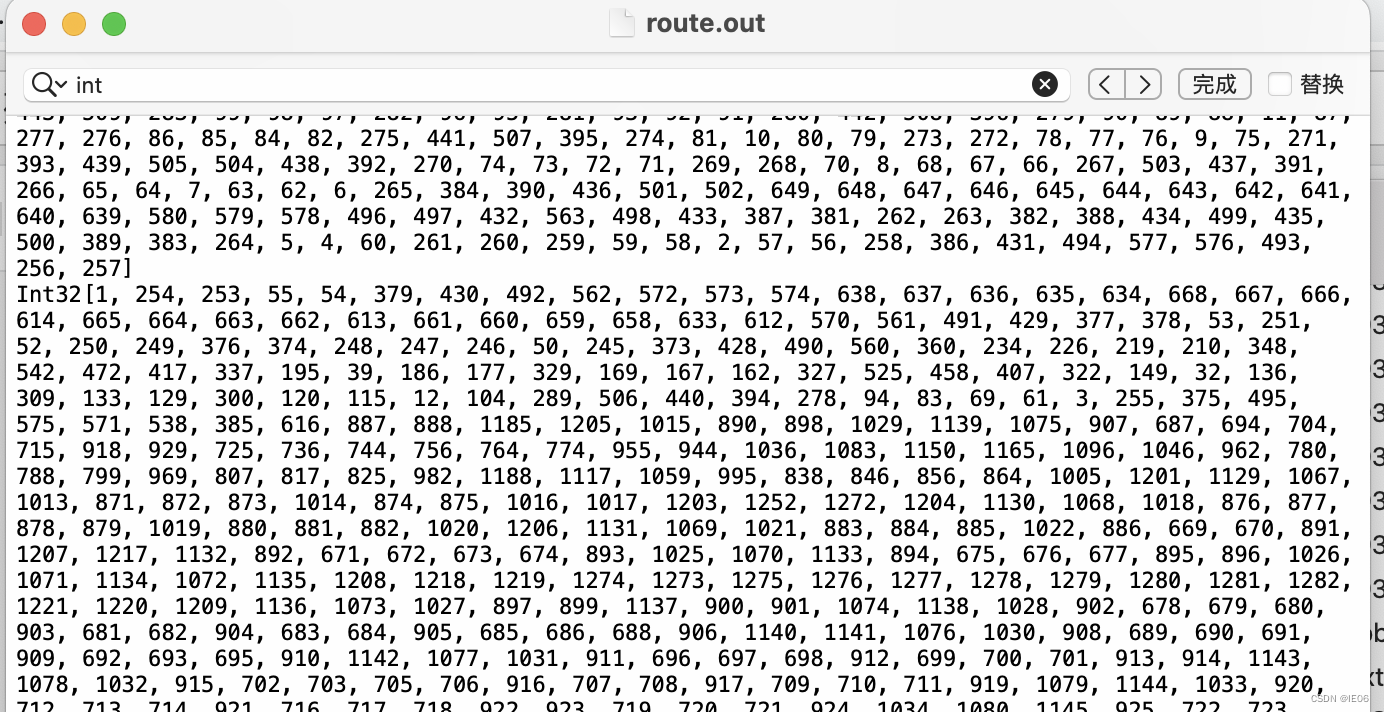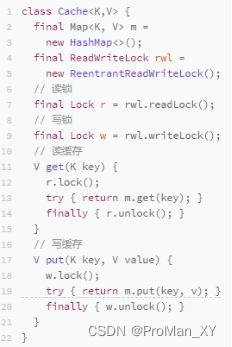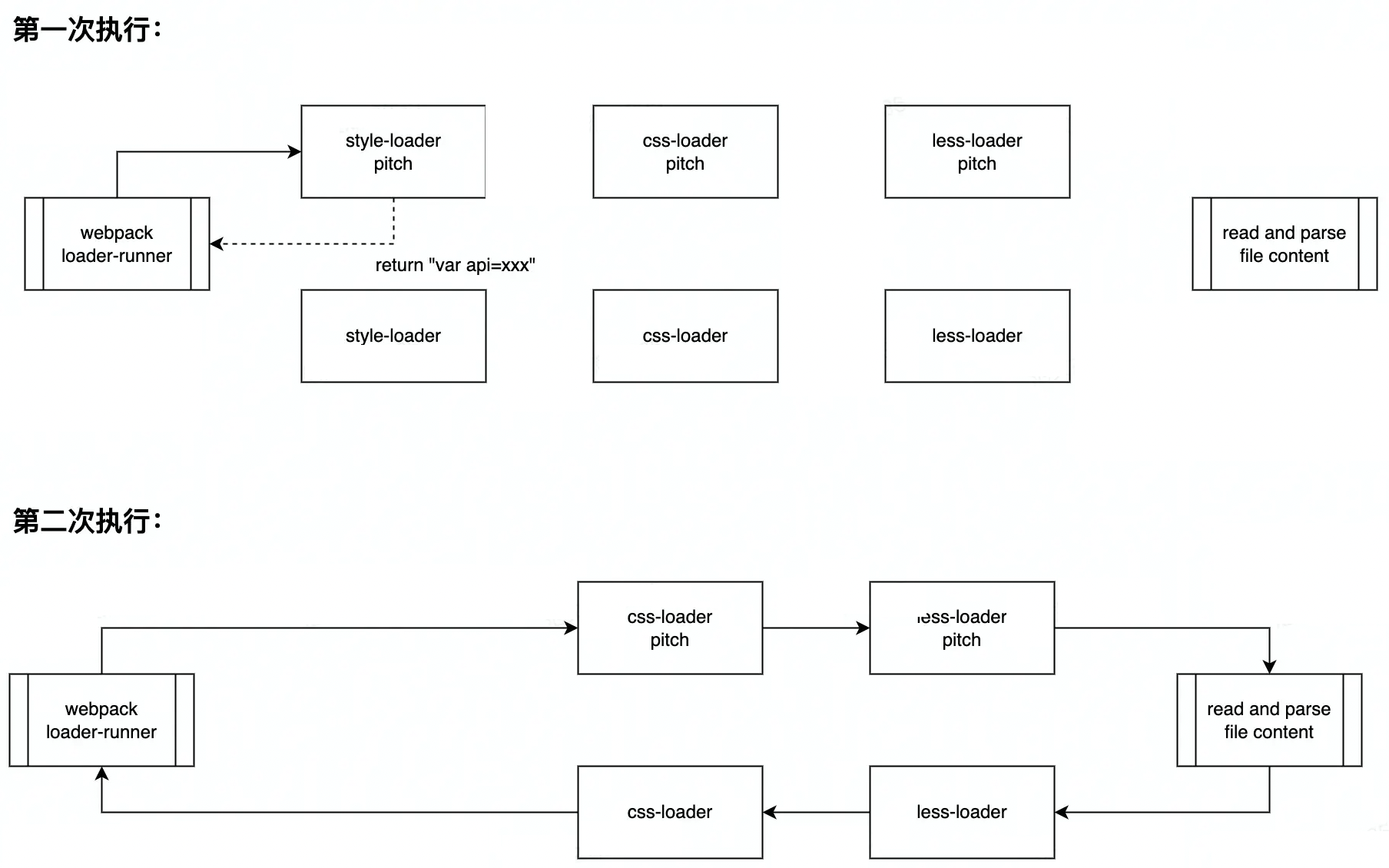1. 常用库和基础函数
这里是优化版的函数:
using TSPLIB,LKH,Distances,PyPlot
MaxNum = 10000
tsp=readTSPLIB(:att48)
dist = [round.(Int,euclidean(tsp.nodes[i,:],tsp.nodes[j,:])) for i in 1:tsp.dimension,j in 1:tsp.dimension];
pos(tsp::TSP,t::Vector{Int},i::Int)=tsp.nodes[t[i]==n+1 ? 1 : t[i],:]
total_length(tsp::TSP,t::Vector{Int64})=sum([round.(Int,euclidean(pos(tsp,t,i),pos(tsp,t,i+1))) for i in 1:length(t)-1])
function minimum2(vec)
i2 = (-1,-1);v2=(MaxNum,MaxNum);for (i,v) in enumerate(vec);if v2[1]>v;v2=(v,v2[1]);i2=(i,i2[1]);elseif v2[2]>v;v2=(v2[1],v);i2=(i2[1],i);end;end
return i2,v2
end
function greedyConstruct(dist)
path = [1];for _ in 1:size(dist)[1];c_dist = dist[path[end],:];c_dist[path].=MaxNum;next_id = findmin(c_dist)[2];push!(path,next_id);end
return path
end
function plot_path(tsp,path)
t = tsp.nodes[path,:];for p in path;text(tsp.nodes[p,1],tsp.nodes[p,2],p);end;scatter(t[:,1],t[:,2]);plot(t[:,1],t[:,2])
end
function plot_tree(tsp,mst)
s = tsp.nodes;for p in 1:tsp.dimension;text(s[p,1],s[p,2],p);end;scatter(s[:,1],s[:,2]);for m in mst;plot(s[[m...],1],s[[m...],2],c="b");end
end
function minspantree(dm::AbstractMatrix{T}) where {T<:Real} # accepts views
mst_edges = Vector{Tuple{Int, Int}}();mst_cost = zero(T);n = size(dm, 1)
tree_dists = dm[1,:];closest_tree_verts = ones(Int, n);tree_dists[1] = MaxNum
for _ in 1:(n-1) # need to add n - 1 other verts to tree
cost, newvert = findmin(tree_dists)
treevert = closest_tree_verts[newvert];mst_cost += cost
push!(mst_edges, tuple(sort([treevert, newvert])...))
tree_dists[newvert] = MaxNum
for i in 1:n
if tree_dists[i] >= MaxNum;continue;end
if tree_dists[i] > dm[i, newvert];tree_dists[i] = dm[i, newvert];closest_tree_verts[i] = newvert;end
end
end
return mst_edges, mst_cost
end
这里是老版的函数
using TSPLIB
using LKH
using Distances
using Random
function pos(tsp::TSP,t::Vector{Int},i::Int)
n = length(t)
i = mod(i, n)
if i == 0
return tsp.nodes[t[n],1:2]
else
return tsp.nodes[t[i],1:2]
end
end
function pos(b::Vector{Int},i::Int)
n_b = length(b)
i = mod(i, n_b)
if i == 0
return b[n_b]
else
return b[i]
end
end
function tour_length(tsp::TSP,t::Vector{Int64})
l = 0
for i in 1:length(t)
l += Int.(round.(euclidean(pos(tsp,t,i),pos(tsp,t,i+1))))
end
l
end
function greedyConstruct(tsp)
n = tsp.dimension
uv = Set{Int}(2:n)
t = Array{Int64}(undef, n)
t[1] = 1
for i in 2:n
cur = t[i-1]
mindist = Inf
ind = 1
for j in collect(uv)
dis = round.(Int, euclidean(tsp.nodes[cur,1:2],tsp.nodes[j,1:2]))
if dis < mindist
mindist = dis
ind = j
end
end
t[i] = ind
pop!(uv,ind)
end
return t
end
num = 30
f = "bbz25234"
tsp = readTSP("/Users/chen/Downloads/vlsi/"*f*".tsp")
n = tsp.dimension
# 解析问题文件
t = parse.(Int, readlines("xrb14233.tour")[6:end-3])
totaldist(t)
用LKH求解器先给出一些初始解:
println("start...")
for i in 1:num
@time t,v = solve_tsp("/Users/chen/Downloads/vlsi/"*f*".tsp";RUNS=1,MAX_TRIALS =150, MAX_SWAPS=100,SEED=i,PI_FILE="pi.txt",TIME_LIMIT=100,CANDIDATE_FILE = "cand.txt") #
@printf("%d",v)
ts[i,:]=t
results[i]= v
end
println("end")
io = open("route.out","w")
for i in 1:size(ts)[1]
write(io, string(ts[i,:])*"\n")
end
close(io)
# route是初始路线合集,格式如下图
ts = Array{Int32}(undef, (num,n))
results = Array{Int32}(undef,num)
lines = readlines("route.out")
println("start...")
for i in 1:num
ts[i,:]=Meta.parse(lines[i]) |> eval
results[i]= totaldist(ts[i,:])
end
println("end")

接下来设计一下基本数据结构。上述路径使用Array来存储的,
2. 使用MPS GPU加速的2-opt算法
核函数如下:
using Metal
function twooptkernel(dist, t, x, y, z)
k = thread_position_in_grid_1d()
n = Int32(size(z)[1])
if k <= n
i = x[k]
j = y[k]
z[k] = dist[t[i], t[j]]+ dist[t[i==n ? 1 : i+1], t[j==n ? 1 : j+1]] - dist[t[i], t[i==n ? 1 : i+1]] - dist[t[j], t[j==n ? 1 : j+1]]
end
return
end
与cpu版本进行对比:
using Random
m = 4000000
x = rand(1:n, m)
y = rand(1:n, m)
z = similar(x)
mx = MtlArray{Int32}(x);
my = MtlArray{Int32}(y);
mz = similar(mx);
mt = MtlArray{Int32}(t);
@time @metal threads=64 grid=6250 twooptkernel(mdist, mt, mx,my,mz)
function cpu(x,y,z)
for k in 1:m
i = x[k]
j = y[k]
z[k] = dist[t[i], t[j]]+ dist[t[i==n ? 1 : i+1], t[j==n ? 1 : j+1]] - dist[t[i], t[i==n ? 1 : i+1]] - dist[t[j], t[j==n ? 1 : j+1]]
end
end
@time cpu(x,y,z)
分别为
0.000656 seconds (254 allocations: 6.031 KiB)
以及
5.414779 seconds (74.26 M allocations: 1.168 GiB, 0.61% compilation time)
m = 40000
完整GPU调用代码如下:
for i in 1:200000
m = 400000
mx = MtlArray{Int32}(rand(1:n, m));
my = MtlArray{Int32}(rand(1:n, m));
mz = similar(mx);
mt = MtlArray{Int32}(t);
@metal threads=64 grid=6250 twooptkernel(mdist, mt, mx,my,mz)
z = Array(mz)
v,ind = findmin(z)
if v < 0
st,ed = mx[ind], my[ind]
if st>ed
st,ed = ed,st
end
reverse!(t, st+1, ed)
end
if i % 1000 == 0
println(i,":",totaldist(t))
end
end
3. LKH算法包
调用方式极其简单:
using LKH
opt_tour, opt_len = solve_tsp(dist)
opt_tour, opt_len = solve_tsp(x, y; dist="EUC_2D")
opt_tour, opt_len = solve_tsp("gr17.tsp")
opt_tour, opt_len = solve_tsp(dist; INITIAL_TOUR_ALGORITHM="GREEDY", RUNS=5)
可用参数参考这篇:https://blog.csdn.net/kittyzc/article/details/114388836
一些常用参数:
RUNS=1, 重复运行次数
MAX_TRIALS =1000, 每次运行最多尝试交换的次数,默认值等于点数。
MAX_SWAPS=1000, 每次交换最多运行swap的次数。
INITIAL_TOUR_FILE = "temp.out", 初始化路径地址
SEED=inum, 每次运行给一个新的seed
PI_FILE="pi-"*f*".txt", 新的cost,计算一次后重复调用
TIME_LIMIT=100, 时间限制
CANDIDATE_FILE = "cand-"*f*".txt", 每个点的近邻,计算一次后重复调用即可
4. 简单遗传算法
每次随机选两条路径(t_ids),并随机从第一条路径t1上选两个点(e_ids),将其中的点按照第二条路径t2的顺序重新排列,产生新的路径t3,对此路径使用LKH算法进行优化,如果距离比t1或者t2短,则进行替换。
iter = 500
t_ids = rand(1:size(ts)[1], (iter,2))
e_ids = rand(1:n, (iter,2))
for inum in 1:iter
t1i,t2i = t_ids[inum,1], t_ids[inum,2]
i1, i2 = e_ids[inum,1], e_ids[inum,2]
if i1>i2
i1,i2 = i2,i1
end
t1 = ts[t1i,:]
t2 = ts[t2i,:]
t3 = Array{Int32}(undef, n)
t3[1:i1] = t1[1:i1]
t3[i2:end] = t1[i2:end]
t2ind = 1
for t3ind in i1:i2
while !(t2[t2ind] in t1[i1:i2])
t2ind += 1
end
t3[t3ind] = t2[t2ind]
t2ind+=1
end
io = open("temp.out","w")
write(io, "TYPE : TOUR\nDIMENSION : "*string(n)*"\nTOUR_SECTION\n")
for i in t3
write(io, string(i)*"\n")
end
write(io, "-1\nEOF\n")
close(io)
t3, s3 = solve_tsp("/Users/chen/Downloads/vlsi/"*f*".tsp";RUNS=1,MAX_TRIALS =1000, MAX_SWAPS=1000,INITIAL_TOUR_FILE = "temp.out",SEED=inum,PI_FILE="pi.txt",TIME_LIMIT=100,CANDIDATE_FILE = "cand.txt") #
sk, skind = findmin(results)
# replace parents
if s3 < sk
print("*",inum,": from ",sk," to ",s3,", ")
io = open("best"*string(s3)*".out","w")
write(io, "TYPE : TOUR\nDIMENSION : "*string(n)*"\nTOUR_SECTION\n")
for i in t3
write(io, string(i)*"\n")
end
write(io, "-1\nEOF\n")
close(io)
else
print(" ",inum,":")
end
a,b = t1i,t2i
if s3 < results[a] <= results[b]
ts[b,:]=t3
results[b] = s3
println(" replace ",b)
elseif s3 < results[b] <= results[a]
ts[a,:]=t3
results[a] = s3
println(" replace ",a)
elseif findmin(results)[1]==findmax(results)[1]
println(" finish")
break
else
println(" pass")
end
end
5. ALNS算法
核心代码如下,首先生成breaks,打断这些点位连接的边,然后使用solve_tsp_part重新进行组合:
b_try_num = 1000
b_point_num = 400
@assert b_point_num*2 <= tsp.dimension
b_id_lists = sort(rand(0:tsp.dimension - 2*b_point_num, (b_try_num,b_point_num)),dims = 2)
for i in 1:b_try_num
b = b_id_lists[i,:] + 2*Vector(1:b_point_num)
t_imp,v_imp = solve_tsp_part(tsp,t,b)
if v_imp>0
t = t_imp
end
if i % 100 == 0
println(tour_length(tsp,t_imp))
end
end
用于重构的solve_tsp_part和恢复路径的restore_tour代码如下:
function restore_tour(t::Vector{Int64},b::Vector{Int64},b_imp::Vector{Int64})
n = length(t)
n_b = length(b)
t_imp = zeros(Int64,n)
cur_imp = 1
for i in 1:n_b
b_i = div(b_imp[2*i]+1,2) # 在b中的下标
r = false
if b_imp[2*i]%2==1
r = true
end
st = pos(b,b_i)
ed = pos(b,b_i+1)-1
if ed > st
mov_imp = ed - st
if r
t_imp[cur_imp:cur_imp+mov_imp] = reverse(t[st:ed])
# for j in reverse(st:ed)
# print(t[j],",")
# end
else
t_imp[cur_imp:cur_imp+mov_imp] = t[st:ed]
# for j in st:ed
# print(t[j],",")
# end
end
cur_imp += mov_imp+1
else
if r
mov_imp = ed - 1
t_imp[cur_imp:cur_imp+mov_imp] = reverse(t[1:ed])
cur_imp += mov_imp+1
mov_imp = n - st
t_imp[cur_imp:cur_imp+mov_imp] = reverse(t[st:n])
cur_imp += mov_imp+1
# for j in reverse(1:ed)
# print(t[j],",")
# end
# for j in reverse(st:n)
# print(t[j],",")
# end
else
mov_imp = n - st
t_imp[cur_imp:cur_imp+mov_imp] = t[st:n]
cur_imp += mov_imp+1
mov_imp = ed - 1
t_imp[cur_imp:cur_imp+mov_imp] = t[1:ed]
cur_imp += mov_imp+1
# for j in st:n
# print(t[j],",")
# end
# for j in 1:ed
# print(t[j],",")
# end
end
end
end
t_imp
end
function check_bimp(b_imp::Vector{Int64})
n_b = div(length(b_imp),2)
for i in 1:n_b
if abs(b_imp[2*i]-b_imp[2*i-1])!=1 || div(b_imp[2*i]+1,2)!= div(b_imp[2*i-1]+1,2)
print(i,":",b_imp[2*i],",",b_imp[2*i-1])
return false
end
end
return true
end
function solve_tsp_part(tsp::TSP,t::Vector{Int64},b::Vector{Int64}) # b for breaks
# cal distance matrix
n = length(t)
n_b = length(b)
dist_matrix_b = zeros(Int64,2*n_b,2*n_b)
for i in 1:n_b
for j in i+1:n_b
dist_matrix_b[2*i-1,2*j-1] = dist_matrix_b[2*j-1,2*i-1] = Int(round(euclidean(pos(tsp,t,pos(b,i)),pos(tsp,t,pos(b,j)))))
dist_matrix_b[2*i-1,2*j] = dist_matrix_b[2*j,2*i-1] = Int(round(euclidean(pos(tsp,t,pos(b,i)),pos(tsp,t, pos(b,j+1)-1 ))))
dist_matrix_b[2*i,2*j-1] = dist_matrix_b[2*j-1,2*i] = Int(round(euclidean(pos(tsp,t,pos(b,i+1)-1 ),pos(tsp,t,b[j]))))
dist_matrix_b[2*i,2*j] = dist_matrix_b[2*j,2*i] = Int(round(euclidean(pos(tsp,t,pos(b,i+1)-1 ),pos(tsp,t,pos(b,j+1)-1 ))))
end
end
max_element = maximum(dist_matrix_b)
for i in 1:n_b
for j in i+1:n_b
dist_matrix_b[2*i-1,2*j-1] += max_element
dist_matrix_b[2*j-1,2*i-1] += max_element
dist_matrix_b[2*i-1,2*j] += max_element
dist_matrix_b[2*j,2*i-1] += max_element
dist_matrix_b[2*i,2*j-1] += max_element
dist_matrix_b[2*j-1,2*i] += max_element
dist_matrix_b[2*i,2*j] += max_element
dist_matrix_b[2*j,2*i] += max_element
end
end
# for i in 1:n_b-1
# dist_matrix_b[2*i,2*i-1] = dist_matrix_b[2*i-1,2*i] = -max_element
# end
b_imp,v_imp = solve_tsp(dist_matrix_b;runs = 1,MAX_TRIALS =50, MAX_SWAPS=400)
v_imp -= max_element*n_b
if check_bimp(b_imp)
v = 0
for i in 1:n_b
v += Int(round(euclidean(pos(tsp,t,pos(b,i)),pos(tsp,t, pos(b,i)-1 ))))
end
imp = v-v_imp
if imp > 0
return restore_tour(t,b,b_imp), imp
else
return t, 0
end
else
return b_imp, -1
end
end







